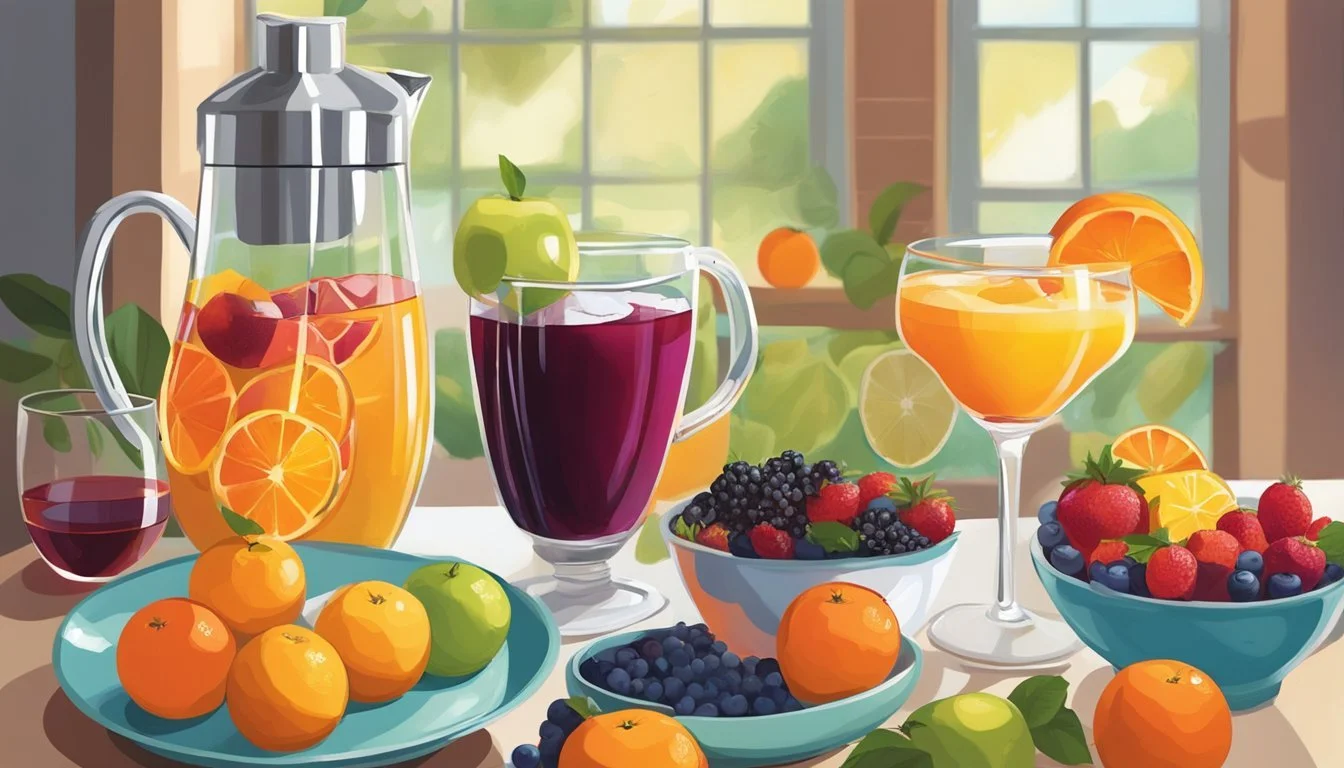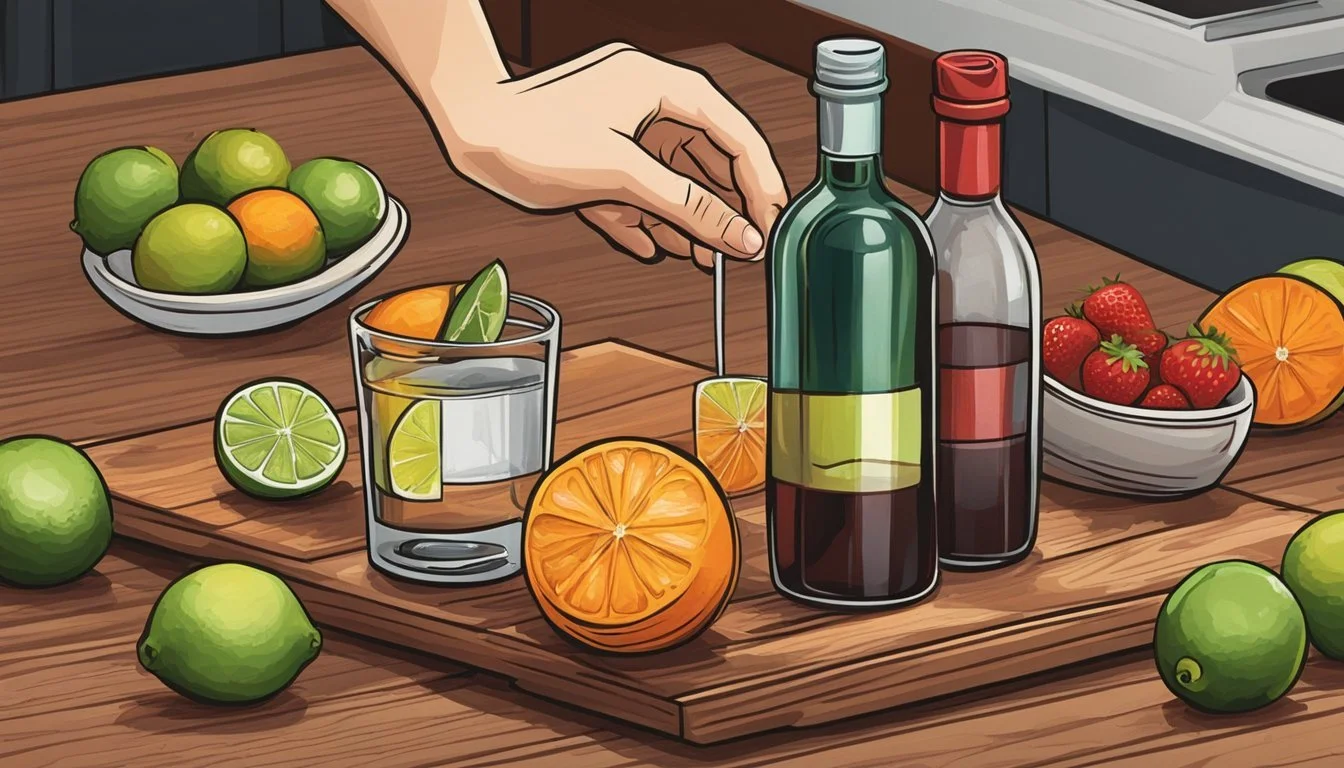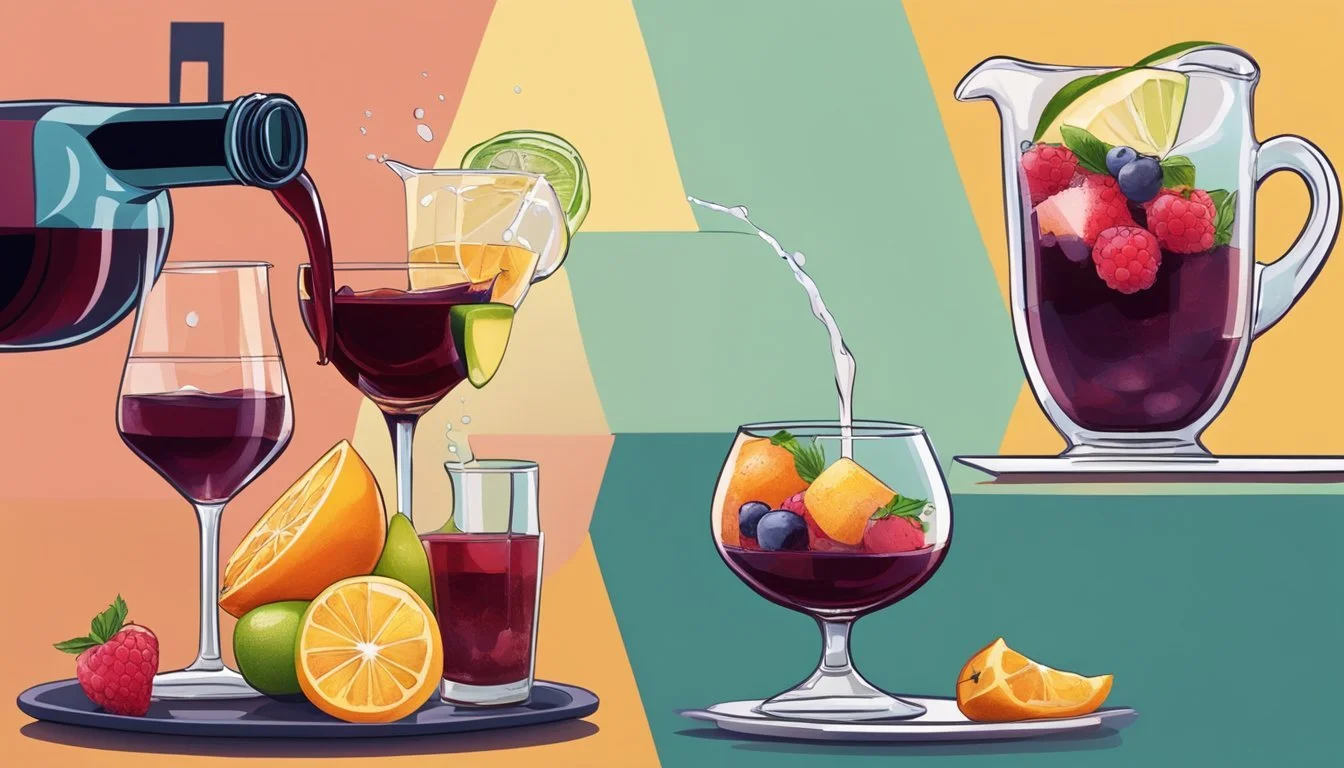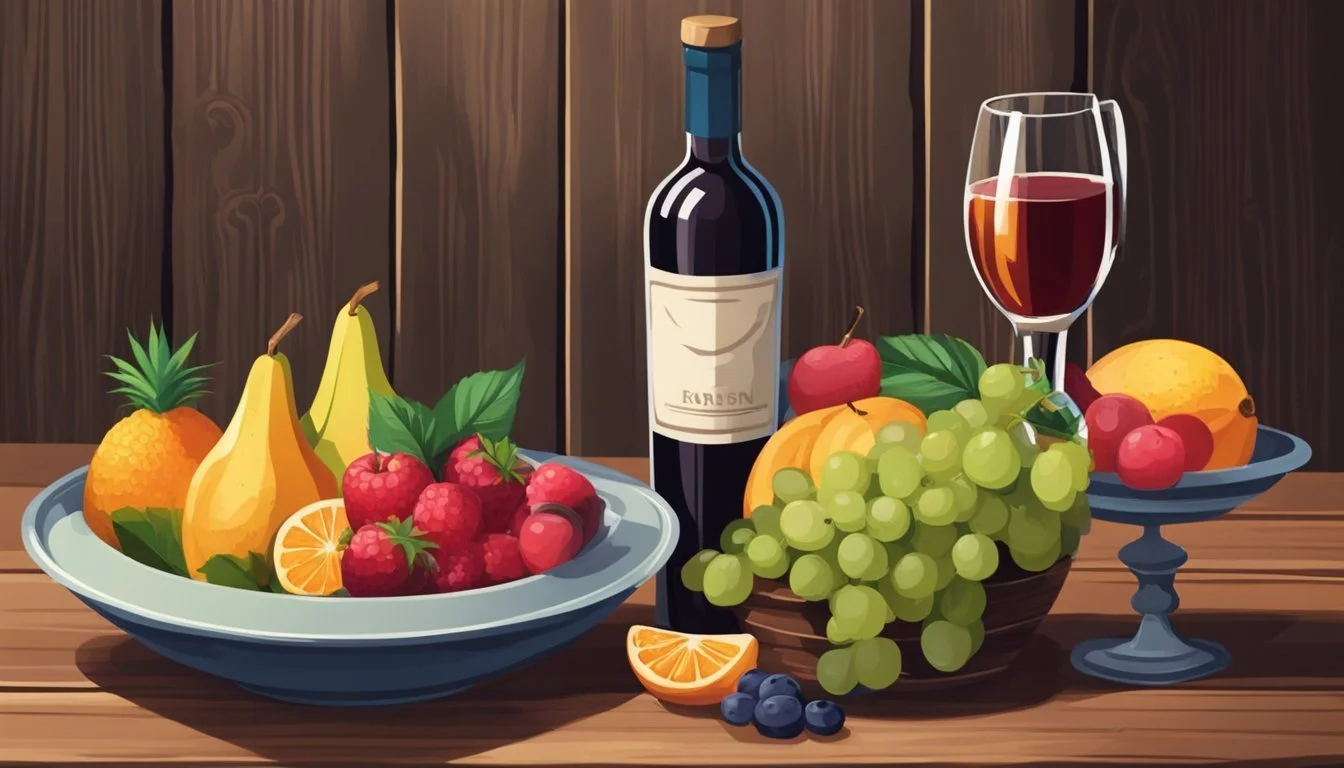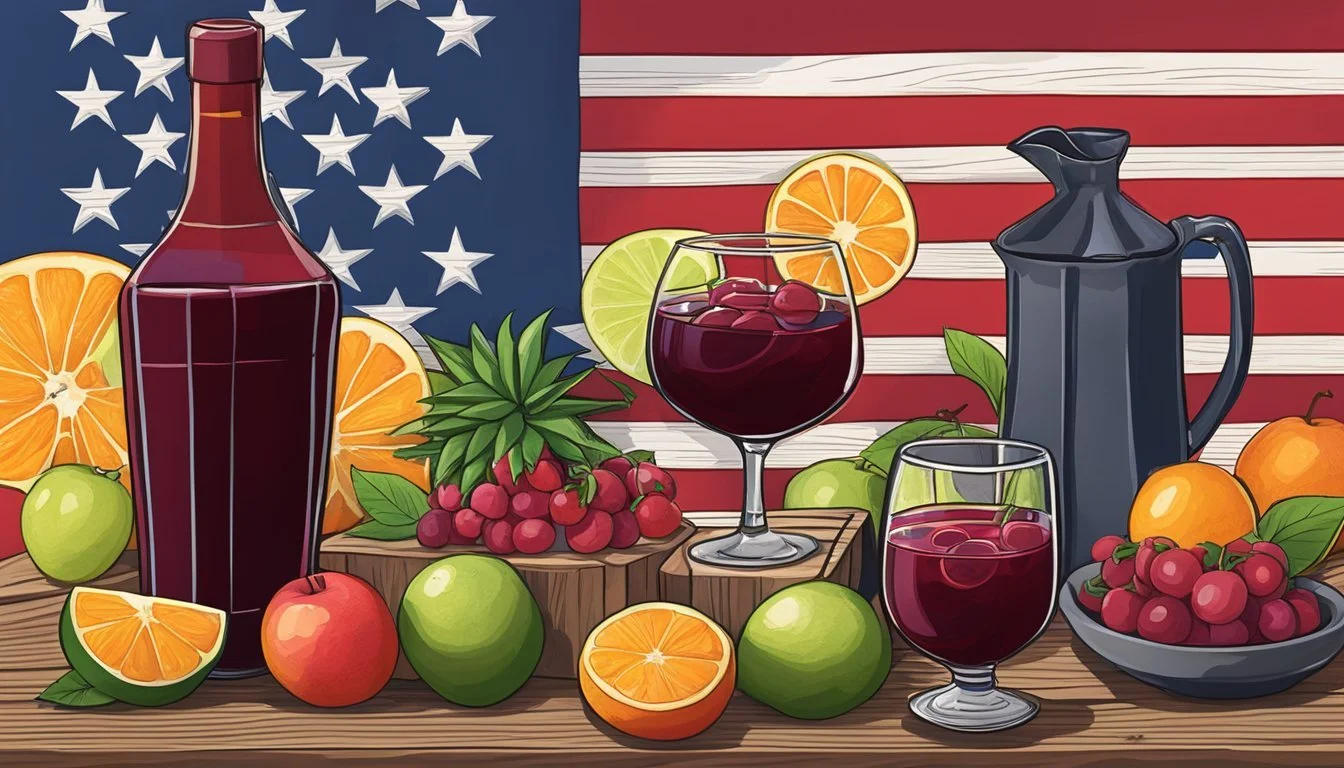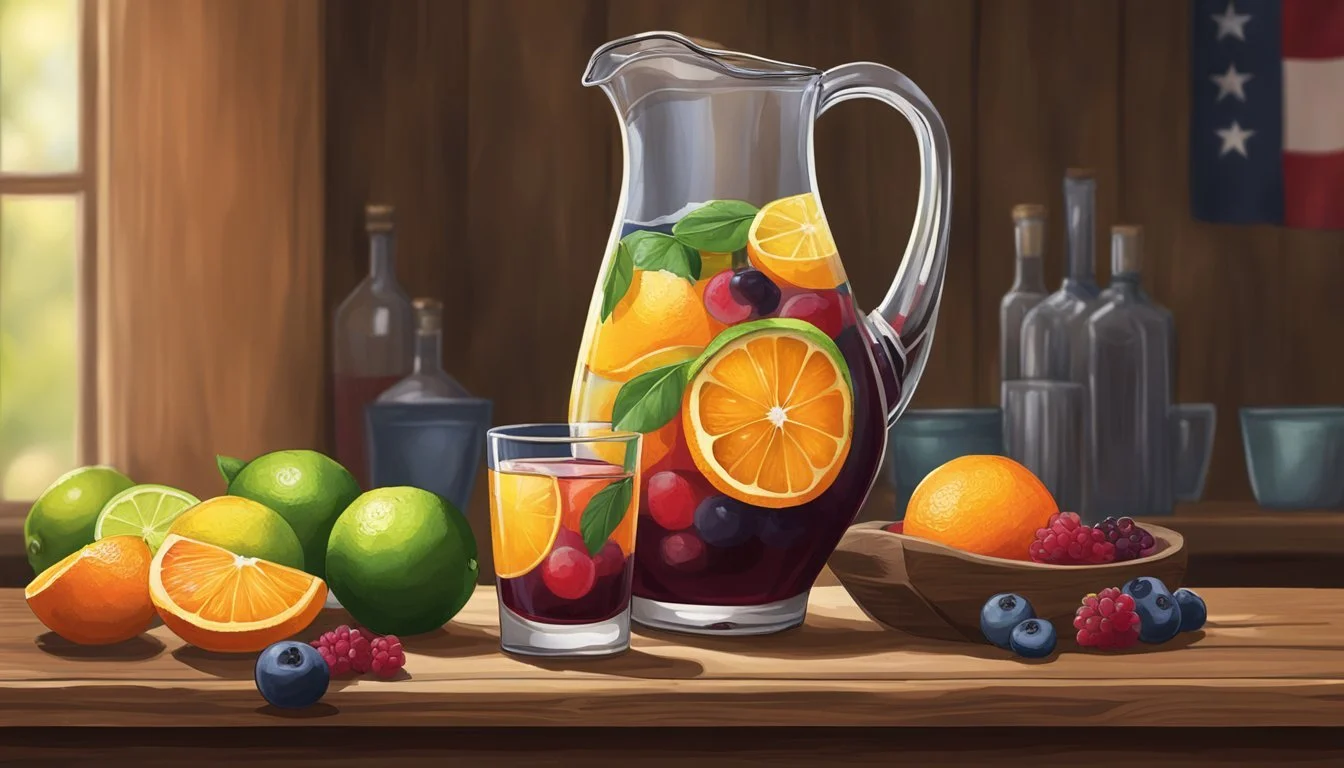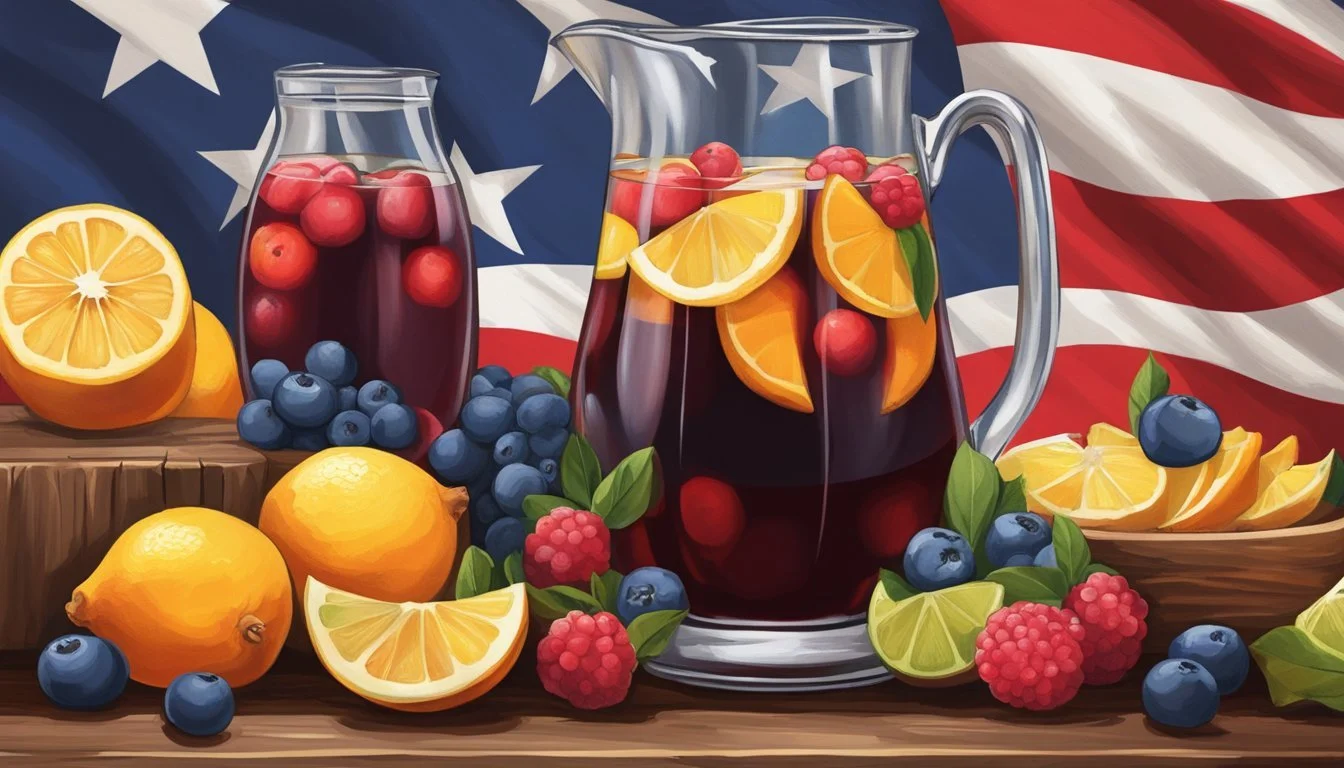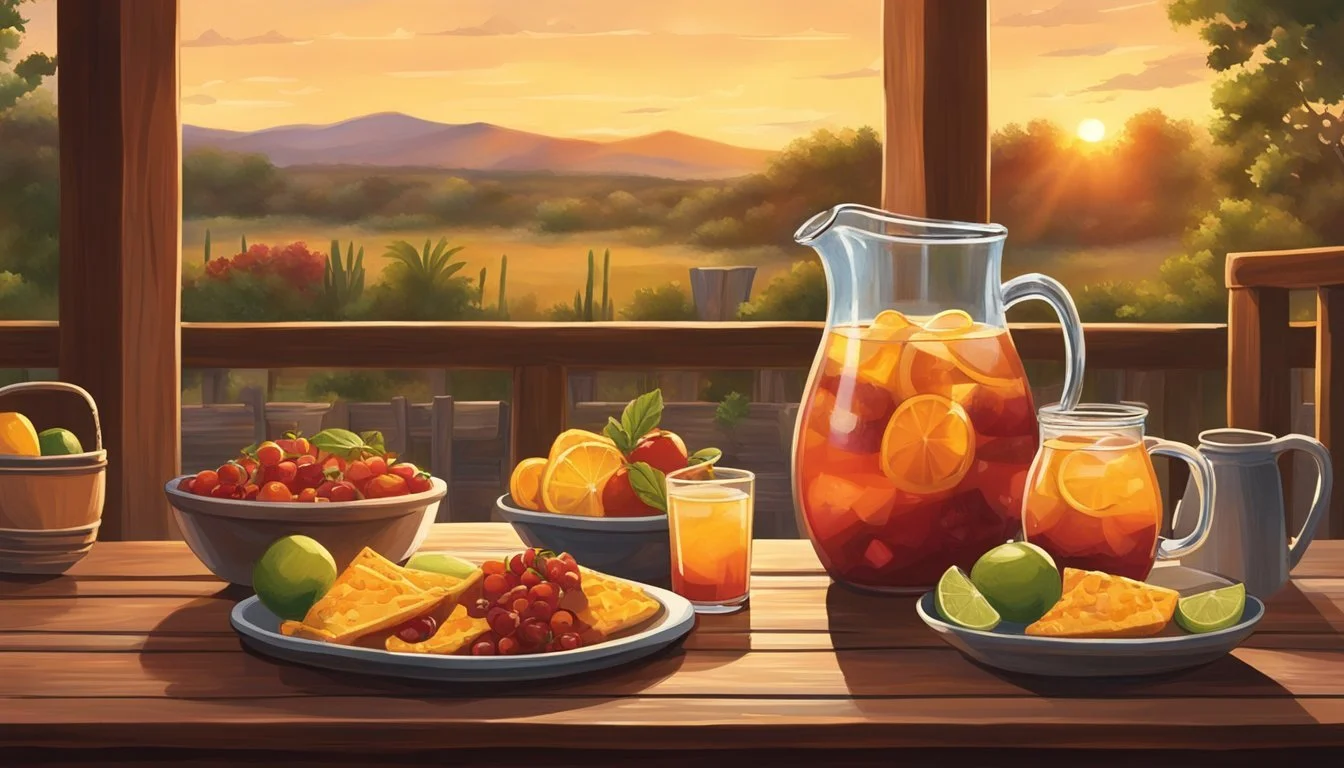How to Create a Texas-Style Sangria
Your Guide to a Bold, Flavorful Twist
Sangria, a festive and fruity beverage originally from Spain, has become a beloved fixture at gatherings worldwide. Its versatility allows for endless variations, enabling regions to imprint their own signature on the classic recipe. Texas-style sangria is a bold take on the traditional mix, infusing the flavors of the Lone Star State into every glass. This rendition typically features a robust red wine base, a kick of local spirits, and a medley of fresh fruits that mirror the state's abundant agriculture.
Creating a Texas-style sangria involves a blend of carefully selected ingredients that capture the essence of Texas. The foundation is often a full-bodied red wine, embracing the warmth of the region. The spirit of choice is typically whiskey, a nod to Texas' renowned distilleries, which adds depth and complexity to the palate. Citrus fruits such as oranges and apples are commonly integrated, contributing both sweetness and a refreshing zest.
In crafting this regional variant, the balance of sweetness and strength is key. Sweeteners like sugar or simple syrup are added to taste, enhancing the natural flavors without overwhelming them. Chilling the sangria allows the flavors to meld and intensify, making it an ideal make-ahead drink for social events. The result is a convivial concoction that's as vibrant and spirited as Texas itself.
The Basics of Sangria
Sangria is a beloved beverage that varies by region, with the Texas-style sangria putting a unique spin on the classic recipe through its bold flavors and ingredients.
Defining Sangria
Sangria typically combines red wine with fresh fruit, a sweetener, and a small amount of added brandy. The blend is appreciated for its refreshing and versatile flavor profile that complements various occasions and cuisines.
History and Origin
Originating from Spain, sangria has made its mark globally, evolving with local touches. The beverage is deeply rooted in Spanish culture, where it is served at social gatherings, reflecting the region's zest for life and communal dining.
Texas-Style Sangria Characteristics
Texas-style sangria differentiates itself by often incorporating local ingredients like Texas citrus, local red wine, and sometimes a unique addition of spirits such as whiskey. Ingredients like Cointreau may be added to enhance complexity and depth to the flavor.
Fruit: Oranges, apples, and other seasonal Texas fruits.
Sweetener: Options range from simple syrup to fruit syrups, with a preference for bolder flavors like molasses.
Alcohol: Predominantly red wine, fortified with brandy, whiskey, or other liqueurs.
Serving: Texas-style sangria is served chilled, often in large pitchers, and is a staple at festive occasions in Texan cuisine.
Selecting Ingredients
The creation of a Texas-style sangria revolves around a harmony of bold wines, regional fruits, and complementary sweeteners and spirits. Selecting the right ingredients ensures that each sip reflects the spirit of Texas.
Choosing the Right Wine
When it comes to wine, full-bodied reds are traditionally used for a robust Texas sangria. Options such as Zinfandel and Pinot Grigio provide a good balance of fruitiness and spice. However, to cater to a wider palate, a Moscato can impart a sweeter profile fitting for a lighter, more refreshing version.
Red Wine: Zinfandel (for spice), Merlot (for smoothness)
White Wine: Pinot Grigio (for zest), Moscato (for sweetness)
Fruit Selection for Texas Flair
Texas sangria should boast a vibrant fruit ensemble. Ripe peaches and blackberries mirror the state's agricultural bounty, while traditional orange slices and lemon offer citrus notes. Adding apple slices can provide a sweet crispness to the profile.
Citrus: Oranges, Lemons
Berries: Blackberries
Stone Fruit: Peaches (preferably Texas-grown for authenticity)
Apples: Sliced for sweetness and texture
Sweetening Components
The sweetness in a Texas sangria can be tailored to one's preference. Sugar remains a classic choice, often dissolved into a simple syrup for easy blending. This allows for a seamless integration of sweetness throughout the beverage.
Sweeteners: Simple Syrup, Sugar
Liqueurs and Spirits
To fortify the sangria and add complexity, a selection of spirits and liqueurs is essential. Brandy is a traditional addition, providing warmth, while Triple Sec or orange liqueur like Cointreau can enhance the citrus characteristics. For a Texas twist, adding a splash of peach liqueur celebrates local flavors.
Brandy: For traditional depth
Orange Liqueur: Triple Sec, Cointreau (for a citrus punch)
Peach Liqueur: For a touch of Texas
Each ingredient contributes to the overall profile of the sangria, and balancing them according to taste is key to a memorable Texas-style concoction.
Preparation Techniques
Creating a Texas-style sangria involves precise techniques to maximize flavor. Understanding how to effectively soak fruit, balance sweetness, and properly chill the sangria is crucial to the success of this festive beverage.
Soaking and Infusing Fruit
To begin, one should thoroughly wash and slice oranges and any other desired fruits. These slices are then placed in a pitcher. Soaking fruit is a critical step, as it allows the fruit to infuse the sangria with natural flavors. For a Texas-style sangria, adding a cinnamon stick during the soaking process can impart a warm and spicy undertone. Fruits are typically mashed gently to release their juices, boosting the overall fruitiness of the drink.
Balancing Flavors and Sweetness
Sugar, or choices like simple syrup, are integral for sweetening the sangria and should be added according to taste preference. Balance is key; one wants to complement the fruit and wine without overwhelming their natural flavors. Sugar not only sweetens but helps in the maceration process, drawing out more flavors from the fruit.
To provide a detailed balance guide:
Start with 1/4 cup of sugar
Taste regularly after stirring until desired sweetness
It's also advisable to blend sweetness with the alcoholic components methodically to ensure a harmonious profile.
Chill Time Considerations
Chill time significantly affects the sangria's flavor. After combining all ingredients, the sangria should be placed in the refrigerator to allow the flavors to meld together. A minimum chilling period of two hours is recommended, although some prefer to chill overnight for a more robust infusion. During chilling, adding a cinnamon stick can further infuse the sangria with its aromatic qualities.
A structured chilling timeline:
Minimum: 2 hours
Optimal: overnight
Recipe and Assembly
This section provides detailed guidance on crafting a Texas-Style Sangria, from the base recipe to proportions and final garnishing touches for an authentic Texan flavor.
Standard Texas-Style Sangria Recipe
To create the base for a Texas-Style Sangria, one will typically start with the following ingredients:
1 bottle of robust red wine
1/2 cup Texas whiskey or bourbon
1 1/2 cups of fresh orange juice
1/4 cup sugar
Fresh fruit such as oranges slices, blackberries, and peaches for infusion
Combine the red wine, whiskey, orange juice, and sugar in a large pitcher and stir thoroughly.
Alcohol and Mixers Proportions
When assembling a Texas-Style Sangria, pay close attention to the balance of flavors and alcohol to mixer ratio. Use these guidelines:
Red Wine: forms the foundation of the sangria; should be bold and full-bodied.
Whiskey or Brandy: 1/2 cup to complement the wine and add a Texan twist, like a smooth peach liqueur or Cointreau for depth.
Mixers: Choose between club soda, ginger ale, or apple cider, determining whether to prioritize sharpness, sweetness, or spiciness.
Proportions can vary based on personal taste, but a balanced starting point is important.
Final Touches and Garnishes
Final garnishes add not only aesthetic appeal but also infuse the sangria with additional flavors:
Citrus Slices: Add orange slices directly into the pitcher.
Peaches and Blackberries: Slice peaches and drop in whole blackberries for a burst of Texas summer.
Cinnamon Sticks: For a spicy note, include a cinnamon stick in the pitcher.
Club Soda or Ginger Ale: Just before serving, top the sangria with a splash for fizz.
Stir gently to combine flavors, and serve the sangria over ice. For best results, allow the sangria to sit for a few hours before serving to let the flavors meld together.
Presentation and Serving
In crafting a Texas-style Sangria, both presentation and serving are pivotal for an enhanced drinking experience. These elements, from the choice of glassware to the garnishing finesse, invoke a sense of place and occasion.
Glassware and Presentation
Texas-style Sangria should be served in a glass that allows ample room for both the beverage and its fruit accompaniments. Stemmed wine glasses or mason jars add a rustic Texas touch, while highball glasses cater to a more classic look. For group enjoyment, present the Sangria in a clear drink dispenser or a large pitcher, which allows guests to appreciate the vibrant color and the medley of fruit within.
Serving Temperature
Sangria is best served chilled. To ensure the Sangria remains refreshing and doesn't become too diluted from ice, one should chill all of the components beforehand, including the wine and fruit. Alternatively, a Sangria can be prepared slightly slushy for a frozen twist, especially appealing during hot Texas summers. This can be achieved by mixing the ingredients in a kitchen blender with ice, creating a cool, sherbet-like consistency.
Garnishing Tips
Garnishing Sangria goes beyond aesthetics; it enhances the flavor. Here are suggestions for garnishing a Texas-style Sangria:
Citrus Slices: Oranges and limes, thinly sliced to enable flavor infusion.
Berries: Such as strawberries or blueberries for a pop of color and taste.
Fresh Herbs: A sprig of mint or rosemary can add a refreshing aroma.
Edible Flowers: Such as hibiscus or marigold, for a dramatic flair often seen in Instagram-worthy cocktails.
It is key to select garnishes that complement both the visual appeal and the flavor profile of the Sangria. These elements not only embellish the drink but often become a conversation starter, making the Sangria a focal point of delight at any gathering.
Nutritional Information
When indulging in Texas-style Sangria, it's important to consider the nutritional aspects such as the caloric content, sugar and fats, as well as the alcohol content. Understanding these factors can help individuals make informed choices about their consumption.
Caloric Content
The calorie count in Texas-style Sangria can vary based on the specific ingredients used. However, a rough estimate for a standard serving size, which is approximately 5 ounces, would be around 120 to 150 calories. The main contributors to the caloric content are the red wine and any added sweeteners like sugar or juice concentrates.
Red Wine (5 oz): 125 calories
Whiskey (1/2 oz): 32 calories
Orange Juice (1.5 oz): 21 calories
Sugar (1 tsp): 16 calories
Sugar and Fats
Sangria contains sugars that primarily come from the fruit, juice, and added sweeteners. There is minimal fat in Texas-style Sangria; typically, it has no saturated or monounsaturated fats. Here are specifics for sugar content:
Red Wine (5 oz): ~1g sugar
Orange Juice (1.5 oz): ~3.5g sugar
Sugar (1 tsp): 4g sugar
Note that using fruits and natural sweeteners will also contribute additional sugars to the beverage.
Alcohol Content
The alcohol content in a standard serving size of Texas-style Sangria can average about 10-12% by volume, but this can fluctuate based on the type of wine and the quantity of spirits added. One must be mindful of their individual limits and the dietary guidelines for alcohol consumption.
Red Wine (5 oz): 12% ABV
Whiskey (1/2 oz): 40% ABV (but small amount within mixture)
Variations and Alternatives
Crafting a Texas-style sangria offers flexibility in ingredients and preparation, allowing for various non-alcoholic versions, fruit and wine variations, and creative add-ins and substitutions, tailored to personal preferences and occasions.
Non-Alcoholic Versions
For a non-alcoholic version of Texas-style sangria, one can substitute the traditional wine with pear nectar or ginger beer to mimic the fruity and slightly spicy profile. Pear nectar provides a sweet, subtle base, while ginger beer adds a zesty, refreshing twist. Adding cinnamon sticks can infuse a warm, complex flavor, echoing the depth often imparted by alcohol.
Fruit and Wine Variations
To alter the fruit profile of Texas-style sangria, one might choose a different combination of fruits such as peaches, berries, or tropical fruits. The wine base is equally adaptable; for instance, a sweet white wine can be used in place of the typical red, offering a lighter alternative perfect for warmer months. Creatively pairing fruits with a corresponding wine type can enhance the overall tasting experience.
Creative Add-ins and Substitutions
For a unique twist, one may introduce creative add-ins such as herbs or alternative sweeteners. For instance:
Mint or basil can offer a refreshing aroma.
Agave syrup or honey could replace traditional sugar for a nuanced sweetness.
Brandy or whiskey may be substituted with orange liqueur for a citrusy depth.
Including different spices such as a cinnamon stick can introduce a warm, aromatic quality, greatly enhancing the complexity of the sangria.
Expert Advice and Tips
Creating a Texas-style sangria invokes a sense of southern warmth and authenticity. The ingredients chosen and the method of preparation can significantly influence the flavors and overall enjoyment of this beloved beverage.
Best Practices for Making Sangria
Proper Fruit Selection: For a true Texas flair, one should select fruits that pay homage to the region, such as peaches or berries. The fruits not only impart flavor but also absorb the sangria’s essence. Experts recommend using fresh, ripe fruits and cutting them into sizes that are easy to manage with a spoon or on the rim of a glass.
Sweetness Balance: The right level of sweetness is crucial. Texas-style may call for something robust, like a mixture of molasses or local honey, matched with the tanginess of the wine. While traditional recipes suggest a simple syrup, experimentation with fruit syrups or even a touch of Texas whiskey can elevate the sangria's complexity.
Wine Selection: A bold red wine is typically the base for Texas sangria, reflecting the big-hearted spirit of the state. However, the wine should not overpower the other ingredients. One should aim for harmony between the fruit, spirits, sweeteners, and wine.
Chilling Time: Patience rewards the bartender with a well-integrated sangria. Allowing the sangria to chill for several hours, preferably overnight, will enable the flavors to meld together beautifully.
Common Mistakes to Avoid
Over-Mashing of Fruits: While it may be tempting to muddle the fruits vigorously to get their juices out, experts caution against this. Over-mashing may result in a cloudy drink and broken down fruit that can be unpleasant to consume. Gentle mashing is key.
Ignoring the Sweetener: Underestimating the importance of the sweetener can lead to a sangria that's either too tart or overly sweet. One should aim for a balanced profile, adjusting the type and amount of sweetener to achieve the perfect blend.
Serving Temperature: Serving sangria at the wrong temperature can diminish its flavors. A properly chilled sangria should be refreshing but not so cold as to dull the intricate taste profile.
Innovative Serving Ideas
Ice Ring with Fruit and Herbs: Rather than traditional ice cubes, one can freeze an ice ring with slices of fruit and sprigs of herbs. This not only chills the sangria without diluting it too quickly but also adds an aesthetic flair.
Signature Garnishes: To make a statement, one can add a distinctive Texan twist with garnishes like a sprig of rosemary or a skewer of grilled fruit, showcasing both innovation and a nod to Texas’s regional produce.
Layered Sangria: For a visual impact, carefully layering the different components of the sangria can create a dramatic presentation. This approach requires precise knowledge of the density of each liquid but can result in a stunning, stratified beverage.
By adhering to these expert guidelines and embracing a touch of Texan audacity, one can craft a sangria that is both impressive and imbued with the essence of Texas.
Pairing Sangria with Food
Sangria, as a versatile beverage, pairs exceptionally well with a variety of dishes, enhancing the dining experience. Choosing the right food combination is key to complementing its fruity and rich flavors.
Ideal Food Combinations
For a Texas-style Sangria, robust flavors work well to balance the boldness of the drink. Below are some specific pairings:
Meats: Grilled steak and barbecued meats (What wine goes well with barbecued meats?) bring out the rich notes of red sangria, especially when the meats are seasoned with spicy or smoky rubs.
Cheeses: A selection of robust cheeses, such as Blue Cheese, Gorgonzola, and Roquefort, contrasts the sweetness of sangria, while Parmesan adds a salty, nutty counterpoint.
Tex-Mex: Traditional Tex-Mex foods like nachos, tacos, or fajitas with spicier profiles are excellently offset by the sweetness of the sangria.
This table outlines some ideal food and sangria pairings:
Food Type Sangria Pairing Notes Steak Red Sangria Spiced, salty steak cuts complement red sangria. Cheese Red/White Sangria Especially strong, moldy, or salty cheeses. Tex-Mex Red/White Sangria The sweetness counters the spice of Tex-Mex foods.
Event and Occasion Pairings
Sangria fits many different types of gatherings. For casual company cookouts, a pitcher of sangria complements the communal and laid-back atmosphere. It's an excellent choice for brunches or afternoon socials, where lighter, fruit-forward versions can be served.
Brunches: White sangria pairs delectably with lighter fare such as seafood or a citrusy ceviche.
Evening Parties: Red sangria suits the flavors of heavier dishes often served at dinner parties or outdoor evening events.
When serving sangria at company events, consider offering both red and white options, with ample fruit garnishes to enhance the convivial vibe.
Conclusion
In crafting a Texas-style sangria, one carefully balances the robust flavors typical of the Texan palate with the classic elements of the traditional Spanish sangria. The infusion of fruits, the choice of wine, and the unique additions set this variation apart.
Recap of Key Points
Fruits: Essential to Texas-style sangria, the use includes oranges, apples, and sometimes pears, which are cubed and sliced to enhance the drink's essence and appeal.
Wine: A fruity red wine is the foundation, with a 1750ml bottle being the typical starting point for a pitcher of sangria.
Flavor Enhancement: Additions such as whiskey or orange juice contribute to the complexity and depth of the flavor, allowing the sangria to resonate with the rich and diverse culinary influences of Texas.
Sweetness: The level of sweetness can be adjusted with simple syrup or sugar, according to personal preferences.
Instagram Appeal: When preparing sangria, visual appeal is key; vibrant colors and fruit presentations enhance its shareability on platforms like Instagram, perfect for social gatherings or company events.
Encouragement to Experiment
They should not shy away from experimentation. Finding the ideal balance for a personal or company event can mean tweaking:
Sweetness levels: Using simple syrup, agave nectar, or adjusting the amount of sugar.
Alcohol content: Varying the amount of whiskey or opting for a wine with a different body or sweetness.
Fruit infusions: Incorporating strawberries, berries, or other fresh fruits can introduce new dimensions to the sangria.
Each pitcher of Texas-style sangria is an opportunity to create a beverage that captivates both the palate and the imagination, setting the stage for memorable experiences.

